ISSN ONLINE(2319-8753)PRINT(2347-6710)
ISSN ONLINE(2319-8753)PRINT(2347-6710)
| Prashant Prakash1, Sanjay Kumar Jha2, Shree Prakash Lal3 Department of Production Engineering, B.I.T Mesra , Patna Campus, India 1 ,3 Department of Production Engineering, B.I.T Mesra , Ranchi , India 2 |
| Related article at Pubmed, Scholar Google |
Visit for more related articles at International Journal of Innovative Research in Science, Engineering and Technology
Friction stir welding (FSW) is a relatively new solid-state joining process. This joining technique is energy efficient, environment friendly, and versatile. The principal advantages are low distortion, absence of melt related defects and high joint strength. In FSW parameters play an important role like tool design and material, tool rotational speed, welding speed and axial force. The paper focuses on process parameters that in required for producing effective friction stir welding joint.
Keywords |
| Friction Stir welding, 6061 aluminum alloy, tool rotational speed, welding speed, tensile strength. |
INTRODUCTION |
| Aluminium alloys with a wide range of properties. Among all aluminum alloys, AA 6061 alloy plays major role in the aerospace industry in which magnesium and silicon (0.3-1.5 w%, Si, Mg) are the principal alloying elements [9]. It is widely used in the aerospace applications because it has good formability, weldability, machinabilty, corrosion resistance, and good strength compared to other aluminum alloys. Aluminum alloys are generally classified as non-weldable because of the poor solidification microstructure and porosity in the fusion zone. Also, the loss in mechanical properties as compared to the base material is very significant. These factors make the joining of these alloys by conventional welding processes unattractive. Some aluminum alloys can be resistance welded, but the surface preparation is expensive, with surface oxide being a major problem. The Welding Institute (TWI) of UK in 1991 as a solid-state joining technique, and it was initially applied to aluminium alloys. The basic concept of FSW is simple. A non-consumable rotating tool with a specially designed pin and shoulder is inserted into the abutting edges of sheets or plates to be joined till the shoulder contact the top surface of workpice and traversed along the line of joint to produce the weld (Fig. 1). The tool serves primary functions: (a) heating of workpiece, (b) deform the material (c) movement of deform material to produce the joint. The heating is accomplished by friction between the rotating tool and the workpiece and plastic deformation of workpiece. The localized heating softens the material around the pin and combination of tool rotation and translation leads to movement of material from the front of the pin to the back of the pin. As a result of this process a joint is produced in „solid stateâÃâ¬ÃŸ. |
| Friction Stir Welding is considered to be the most significant development in metal joining in a decade. In Friction Stir Welding no cover gas or flux is used, thereby making the process environmentally friendly, energy efficiency and versatility or it is a „green technologyâÃâ¬ÃŸ. The joining does not involve any use of filler metal and therefore any aluminum alloy can be joined without concern for the compatibility of composition, which is an issue in fusion welding. In FSW no cover gas or flux is used, and does not involve any use of filler metal so that the properties of the joints are improve compare to the parent metal [10]. Friction stir welding can be applied to various types of joints like butt joints, lap joints, T butt joints, pipes and fillet joints with different thickness and different profile. FSW technique was initially developed for Al-alloys, it also has great potential for welding of Mg-, Cu-, Ti-, Alalloy matrix composites, lead, some steels, stainless steels, and different material combinations, particularly those with close melting temperatures and similar behaviour such as hot workability [19]. However, cost effective stirring tools are needed for welding some of these materials such as metal matrix composites and those with high melting temperatures, i.e. steels and titanium alloys. In this process, a specially consider important parameters, tool material ,tool design, tool rotation, downward force and weld speed along the joint line, generating frictional heating that softens a material underneath the tool. The softened material flows around the tool through extensive plastic deformation and is consolidated behind the tool to form a solid-state continuous joint. |
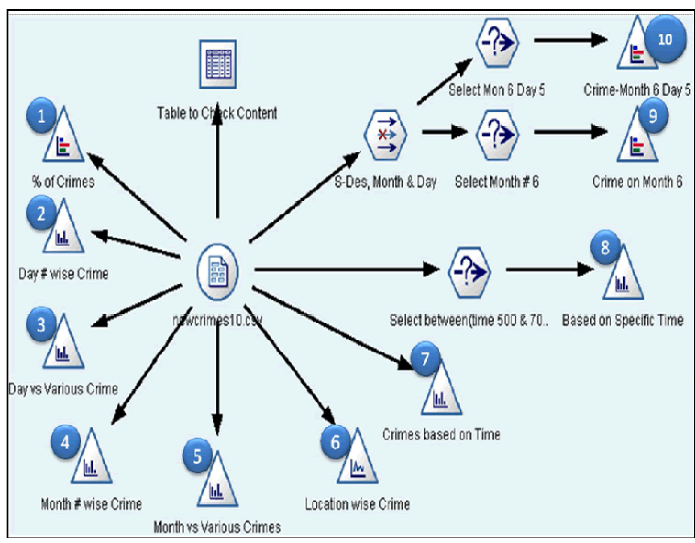 |
| A. Arora, A. De, and T. Debroy (2011) [30] experimentally and theoretically explain that that a criterion that balances the need for low flow stress for good material flow and the contrasting requirement for the tool to have a good grip on the plasticized material can be used to identify an optimum shoulder diameter. Performed FSW experiments on AA7075-T6 for a number of tool shoulder diameters and tool rotational speeds and used a threedimensional, heat transfer and viscoplastic flow model to simulate these welding experiments. mm/min. Consequently, the appearance of the weld for different rotational speed is shown and the impact of the stress as a function of strain and the effect of different rotational speed and pin profiles on yield strength and elongation are analyzed.K. Elangovan, V. Balasubramanian (2007) [26] attempt has been made to understand the effect of tool pin profiles and rotational speed on FSP zone formation. Analyzed the relation between the FSP zone formation and tensile properties of friction stir welded AA2219 aluminium alloy joints.Muhsin J. J., Moneer H. Tolephih and Muhammed A. M. (2012) [27] explain the variation of transient temperature in a friction stir welded plate of 5mm workpiece thickness. Based on the experimental records of transient temperature at several specific locations during the friction stir welding process for the AA 7020-T53, and Comparison with the temperature measured by the thermocouples records shows that the results from the present numerical simulation.Z. Barlas and U. Ozsarac (2012) [28] explain the effects of the tool rotation speed, tool tilt angle, and tool rotation direction on the macrostructure, microstructure, and mechanical properties of Al 5754 butt joints due to the lack of experimental information. Ahmed Khalid Hussain, Syed Azam Pasha Quadri (2010) [11] attempt is made to determine and evaluate the influence of the process parameters of FSW on the weldments. The Vickers hardness, tensile strength and radiography are considered for investigation by varying tool speed, tool feed and maintaining constant depth of penetration of weld. Experiments were conducted on AA6351 Aluminium alloy in a CNC Vertical Machining Centre. The output factors are measured in UTM, Vickers hardness tester and Radiography equipment. Results show strong relation and robust comparison between the weldment strength and process parameters and selection of optimum process parameters for efficient weld.P. Bahemmat ,A. Rahbari ,M. Haghpanahi,M. K. Besharati (2008)[8] Understand the effect of tool pin profiles and rotational speed on the weld quality of AA2024 aluminium using FSW process. Four-flute and taper screw thread pin are used as tool pin profiles. The pin was rotated at different rpm and the friction pressure was held constant. In all of the experiments, the welding speed was held the same at 50. Yan-hua ZhaoT, San-bao Lin, Lin Wu, Fu-xing Qu (2005)[29] study the effect of pin geometry on the weldability and mechanical properties of welded 2014 Al plates using FSW process was investigated. The pin was rotated at 400 rpm and the friction pressure was held constant. In all of the experiments, the welding speed was held the same at 100 mm/min, the only difference in the experiments was the pin geometry.S. Mandal, J. Rice, A.A. Elmustafa(2008) [14] explain the experimental method is proposed to analyze the role of friction stir welding tool on friction stir weld formation by analyzing the material flow. Material flow is analyzed without the insertion of marker material. Based on observations made in the analysis, mechanisms of friction stir weld formation; defect formation and onion ring formation are proposed. |
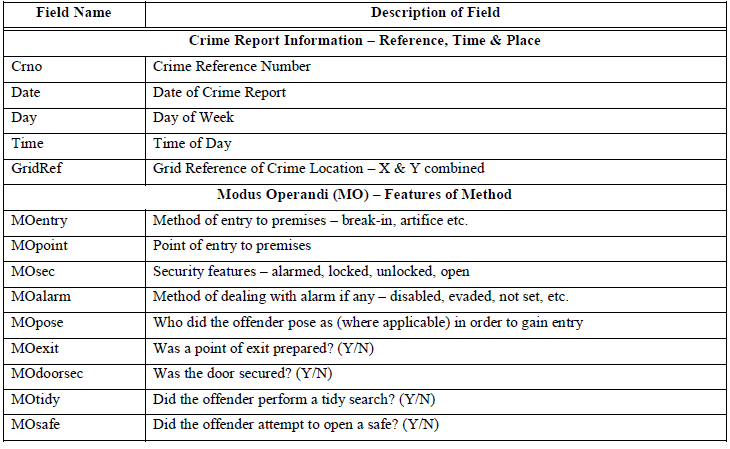 |
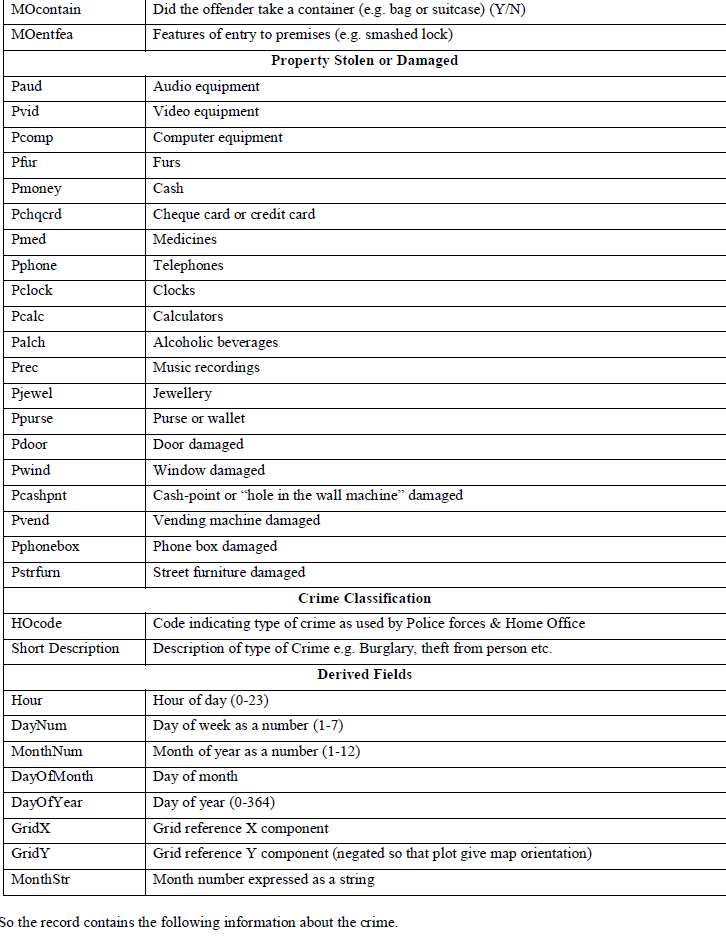 |
| AA 6061 Aluminium Alloy plates (150mm X 50mm X 6mm) are use for this experiment tool is designed. The material of the tool is H13 steel is used. The profile of this tool is having outer shoulder diameter of 18mm, pin diameter 6mm is use for friction stir welding for AA6061 Aluminium Alloy plates. |
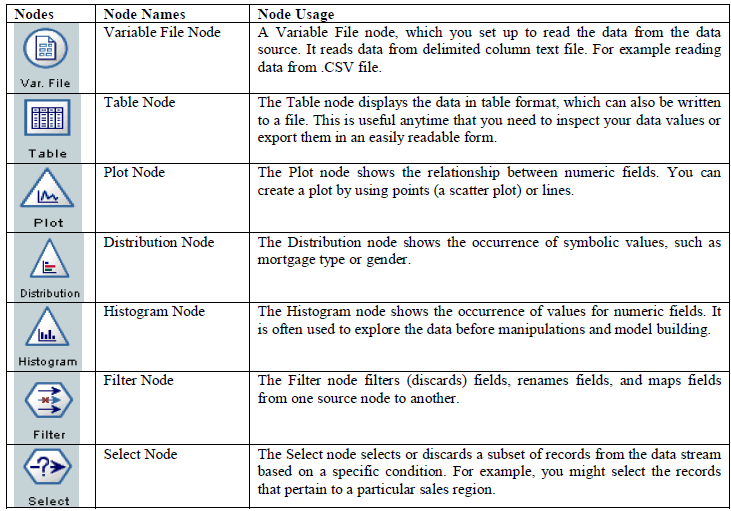 |
| The tool has flat shaped probe with threads. The FSW is carried out on Universal Milling Machine (HMT-V MH2) Specification are. |
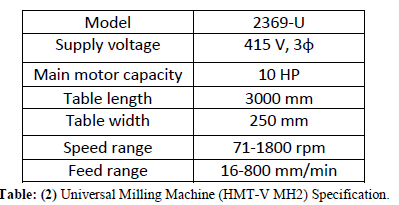 |
| The plates are positioned in the fixture, which is prepared for fabricating FSW joints by using mechanical clamps so that the plate will not be separated during welding illustrated in Figure4. The tool is fixed in the tool holder of the milling machine and the milling head is tilted with a rake angle of 00 to 30 to the vertical axis. The tool speed can be selected in the range between 710 to 1800 rpm based on the plate material and it thickness to be welded. Tool is lowered while in rotation and plunged in to the plates when the shoulder touches the plate, heat is generated. After a few second, table movement is given and it can be varied from 16 to 800 mm/min. This paper design of two newly developed tools which were used in the present work is illustrated in Figure3. It should be noted that, in each design shape and size is same and having shoulder under surface is flat surface. The shoulder diameter is 18mm. The shoulder area in contact with work piece surface is same in all two cases. Two same shapes of the pin which were used flat shoulder profile with threaded pin. It should be noted that length of the pin is different in each case while surface area of the pin in contact with abutting base metal plates are different & depends upon pin length. For welding purpose Universal Milling Machine is used. Trial runs were conducted prior to conducting actual experiments. Other process parameter like mechanical performance of the welding, tensile strength is measured and the calculated value compared with the base material. |
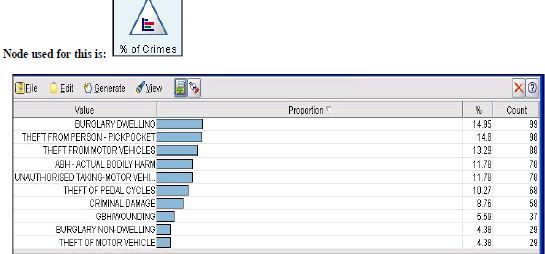 |
III. RESULTS |
| In the present work, different FSW butt welds were obtained by varying the process parameters within the range and the optimal values are drawn based on the trend of the values. The weld joints are tested for tensile strength and the specimens are cross sectioned from the joints perpendicular to the welding direction and are as per ASTM guidelines. The parameters tool rotational speed, pin length and welding speeds are varied by keeping the axial force constant. |
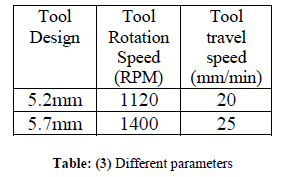 |
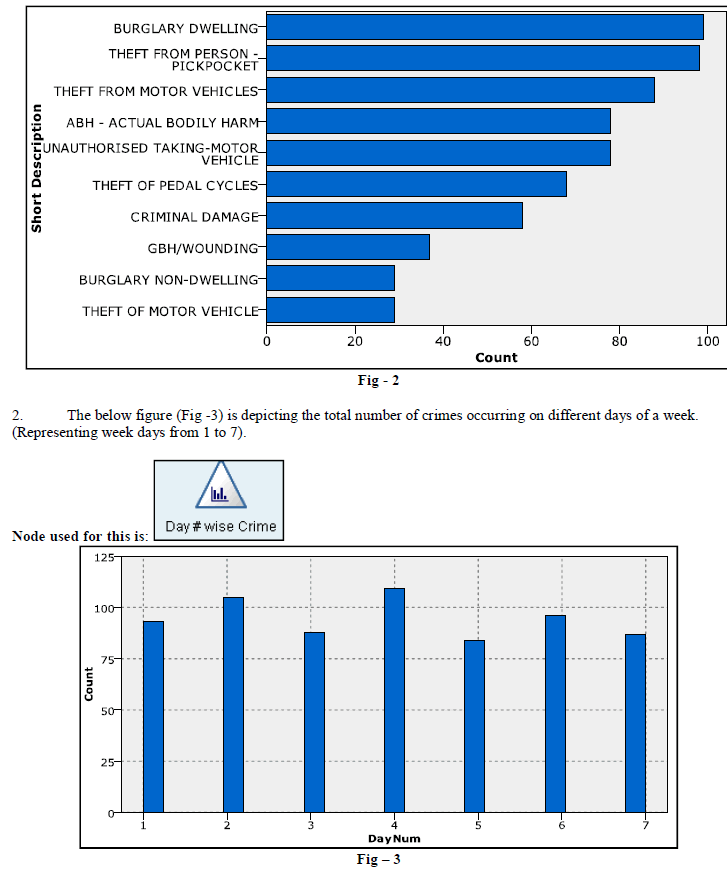 |
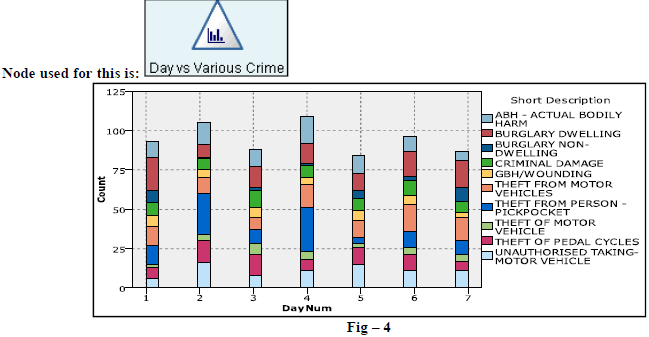 |
IV. DISCUSSIONS |
| In this experiment it is observed that the process parameters like tool design, tool rotational speed, welding speed and axial force are the main parameters to produce the butt joint by friction stir welding. Other parameters are important but sub sets of the main parameters like indentation time of tool cannot be too long or too short, materials of the tool and backing bars should have low thermal conductivity and tilt angle used should be between 00 to 30. It is also observed that more than 6mm thickness of work piece is possible to weld by friction stir welding butt. The condition is to design a different tool for different thickness. While designing tool, the tool tip length should be less than the thickness of the base material i.e less than 0.25 to 0.8 times of the base the material thickness. |
V. CONCLUSIONS |
| It can be concluded that by varying the process parameters within the range: Case I: Tool rotation speed 1120 rpm, Welding speed 20 mm/min and Pin length of the tool 5.2mm.Tensile strength obtained is 142Mpa. Case II: Tool rotation speed 1400 rpm, Welding speed 25 mm/min and Pin length of the tool 5.7mm. Tensile strength obtained is 182Mpa. From the two cases it has been observed that the maximum tensile strength obtained is 182 Mpa from case II. We know that tensile strength of base material is 320Mpa; it means the joint efficiency is 60%. |
References |
|